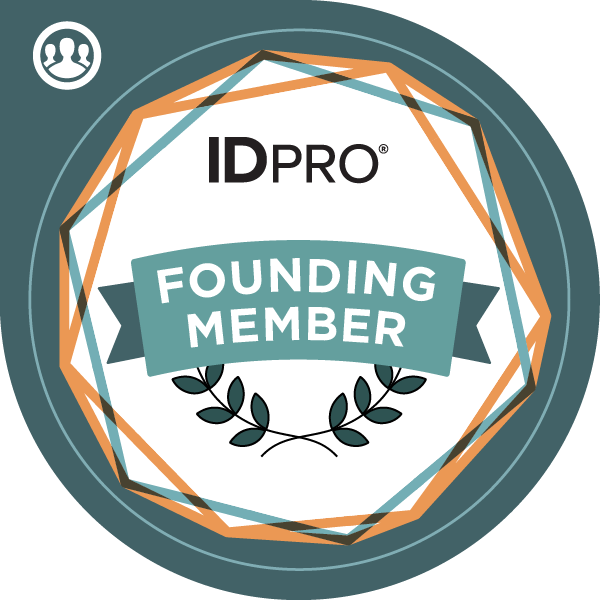
The Identity and Access Management (IAM) industry is ready to move out of its parents’ house and be recognized as an equal player to other critical business functions. CEOs are learning more about the criticality of the IAM function. CIOs have this as a named thing in their portfolio of responsibilities. Basically, we’re recognized as a critical function for modern businesses. Go, team!
But my observation from chatting with people in conference hallways and social media channels is that professionals in our industry are still grappling with this shift in expectations. There are new skills we need to polish (or learn outright) that may not have been on our radar. Let’s talk about that.
The Evolution of IAM: From the Shadows to Center Stage
I’m going ahead and asserting that IAM was often treated as a necessary but secondary concern. Many organizations didn’t see it as integral to their operations, leaving it to be managed by HR or, at best, as part of broader cybersecurity efforts. IAM was reactive, a tool to be deployed after other systems were in place. And no one was actually trained before they got sucked into the vortex of IAM.
COVID was eye-opening to lots of people in the Gen X and Boomer crowd when it came to recognizing the importance of IAM. I’m willing to guess, however, that Millenials and Gen Z already had the expectations in place that their digital identity and the whole identity experience online was a Really Big Deal.
Modern businesses cannot function securely or efficiently without a robust IAM infrastructure. It’s not just about keeping the wrong people out; it’s about enabling the right people to access the resources they need when they need them. And SO MANY resources are now online. Little wonder that companies demand more from identity professionals than ever before.
The New Reality: IAM as a Core Business Function
Today, IAM is less an afterthought and more a core business function. The stakes are higher, the demands are greater, and the need for skilled identity professionals has never been more urgent. IAM is foundational to every aspect of a business’s operations—from securing sensitive data to ensuring compliance with regulatory requirements, to supporting seamless user experiences.
But with this shift comes a new set of expectations. Identity professionals must now act with the same level of urgency and importance as their counterparts in HR, Engineering, and Sales. This means not only managing identities but also understanding the broader business implications of their work. It means being able to prepare reports for our executives and present our projects and findings across teams. We are more visibly responsible for balancing security with usability, ensuring that IAM solutions support business goals while protecting critical assets.
Stepping Up: What It Means to Be an IAM Professional Today
Of course, there is the need to stay on top of the technological changes in our space. Establishing yourself with a baseline of IAM knowledge is a great idea (had to do a CIDPRO® promo in there). But there are a few other areas I think you’ll want to focus on, too:
- Strategic Thinking: Identity professionals must move beyond the technical aspects of IAM and start thinking strategically. How does IAM align with the company’s business objectives? How can IAM drive efficiency, innovation, and competitive advantage?
- Collaboration: IAM is no longer siloed; it’s a function that touches every part of the organization. Identity professionals must collaborate closely with other departments, from IT to HR to Legal, to ensure that IAM solutions are aligned with business needs.
- Leadership: As IAM becomes more critical, identity professionals need to take on leadership roles within their organizations. This means having the skills to advocate for IAM at the executive level, ensuring that it receives the attention and resources it deserves.
- Continuous Learning: The IAM landscape is constantly changing, with new technologies, threats, and regulations emerging all the time. Identity professionals must commit to continuous learning to stay ahead of the curve and keep their organizations secure.
The Future of IAM: Becoming Indispensable
The evolution of IAM from a part-time function in the Information Security or HR departments to a core business function is still ongoing, but in no world can I imagine that function will do anything but grow. Those who build up more than just technological awareness will be the ones who shape the future of IAM—and ensure that their organizations can thrive in a complex, digital world.
If you’ve read this far, you rock AND you’re in the right place to engage with other professionals to grow all your skills, from collaboration and leadership to hard-core tech knowledge. IAM is critical to the success and security of modern businesses. You can do more with strategic thinking, collaboration, leadership, and continuous learning and ensure that you’re not just keeping up with the demands of the business world, but driving it forward.
Disclaimer: The views expressed in the content are solely those of the author and do not necessarily reflect the views of the IDPro organization.
Author (as an individual contributor)
 Heather Flanagan, Principal at Spherical Cow Consulting, comes from a position that the Internet is led by people, powered by words, and inspired by technology. She has been involved in leadership roles with some of the most technical, volunteer-driven organizations on the Internet, including IDPro as Principal Editor, the IETF, the IAB, and the IRTF as RFC Series Editor, ICANN as Technical Writer, and REFEDS as Coordinator, just to name a few. If there is work going on to develop new Internet standards or discussions around the future of digital identity, she is interested in engaging in that work. You can learn more about her on LinkedIn or reach out to her on the IDPro Slack channel.
Heather Flanagan, Principal at Spherical Cow Consulting, comes from a position that the Internet is led by people, powered by words, and inspired by technology. She has been involved in leadership roles with some of the most technical, volunteer-driven organizations on the Internet, including IDPro as Principal Editor, the IETF, the IAB, and the IRTF as RFC Series Editor, ICANN as Technical Writer, and REFEDS as Coordinator, just to name a few. If there is work going on to develop new Internet standards or discussions around the future of digital identity, she is interested in engaging in that work. You can learn more about her on LinkedIn or reach out to her on the IDPro Slack channel.







